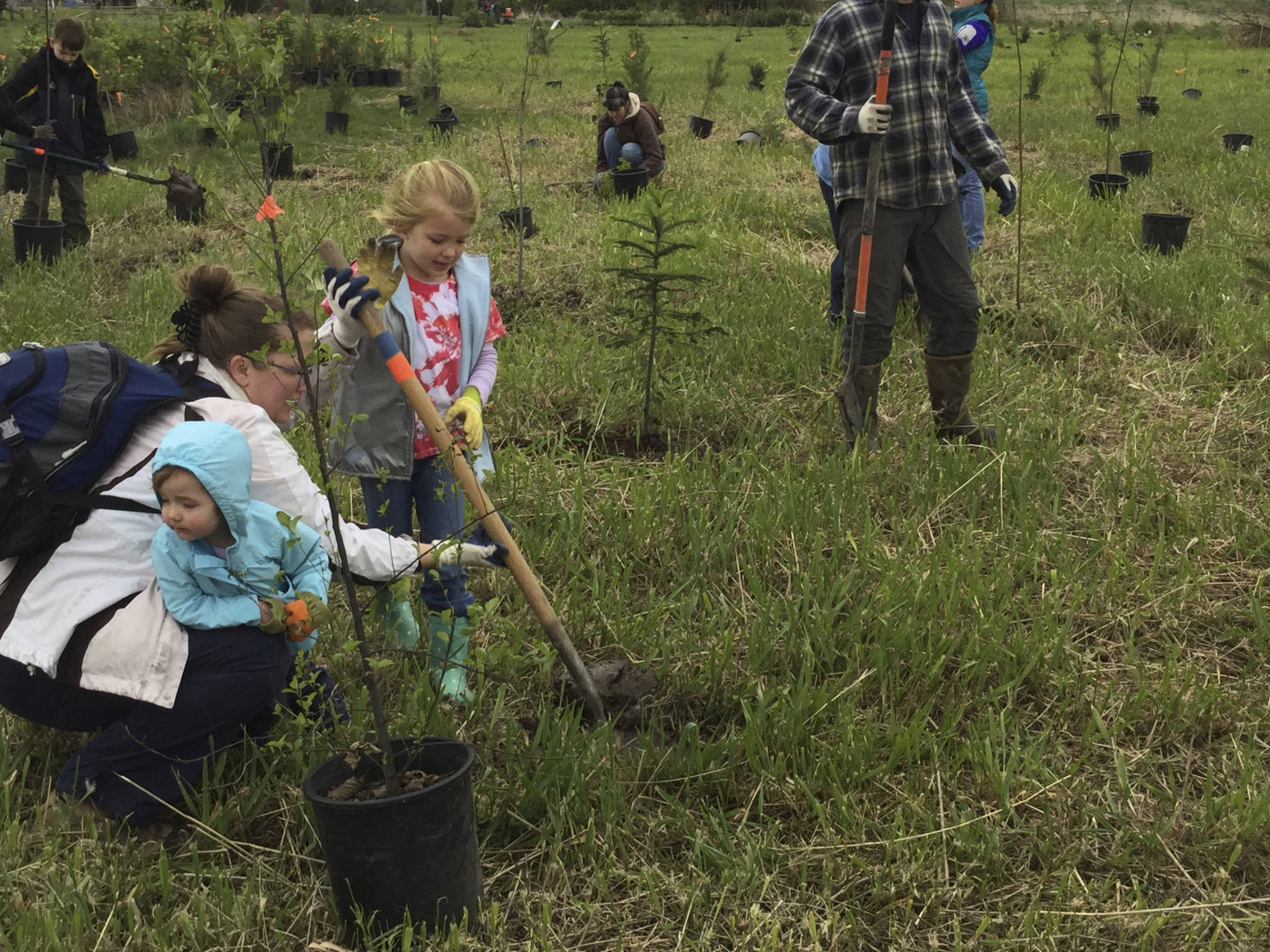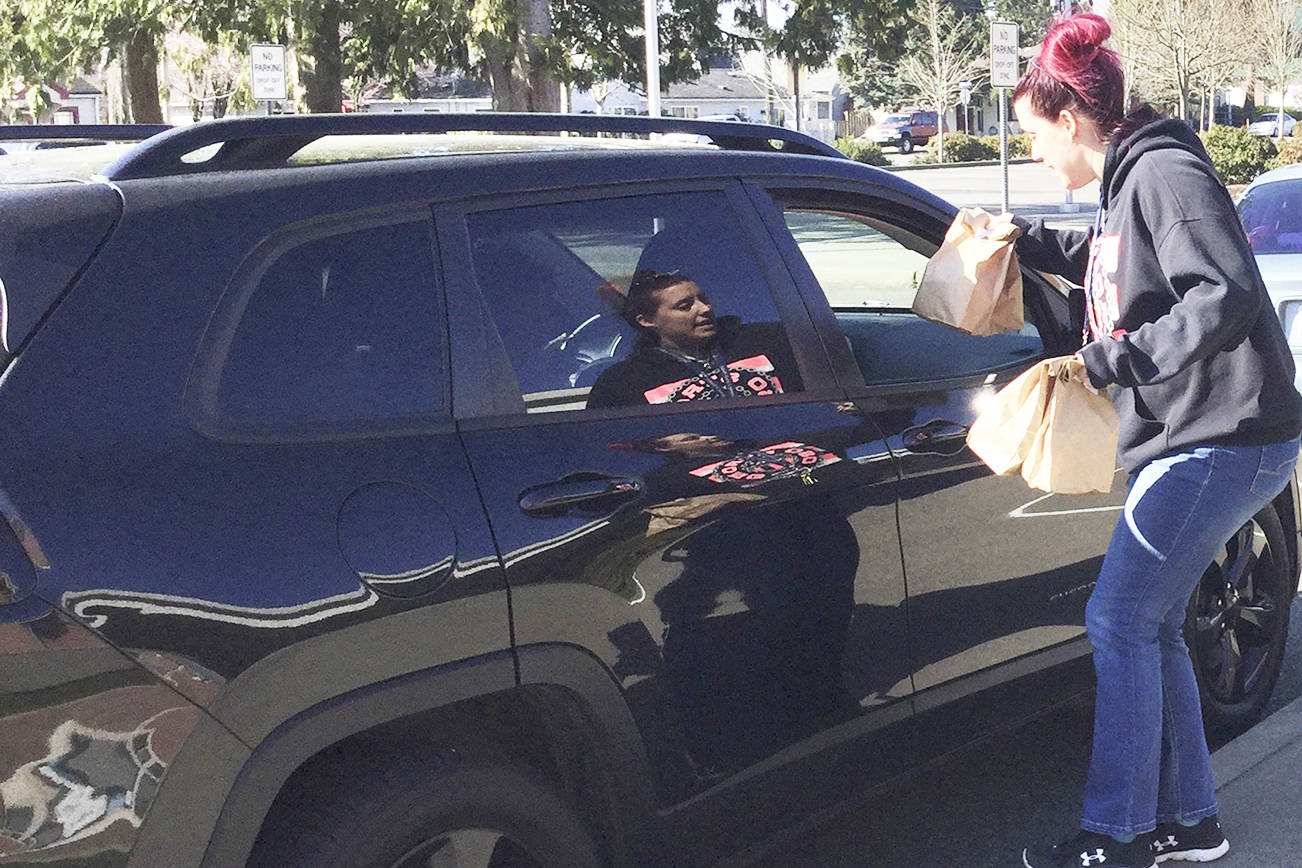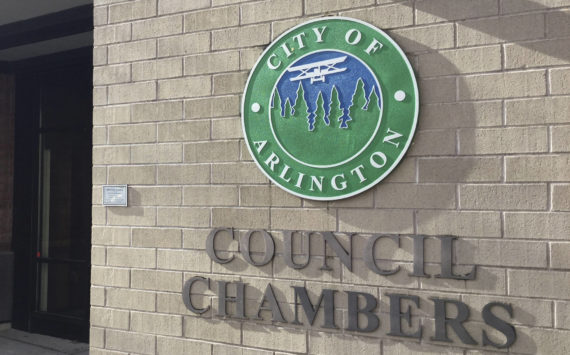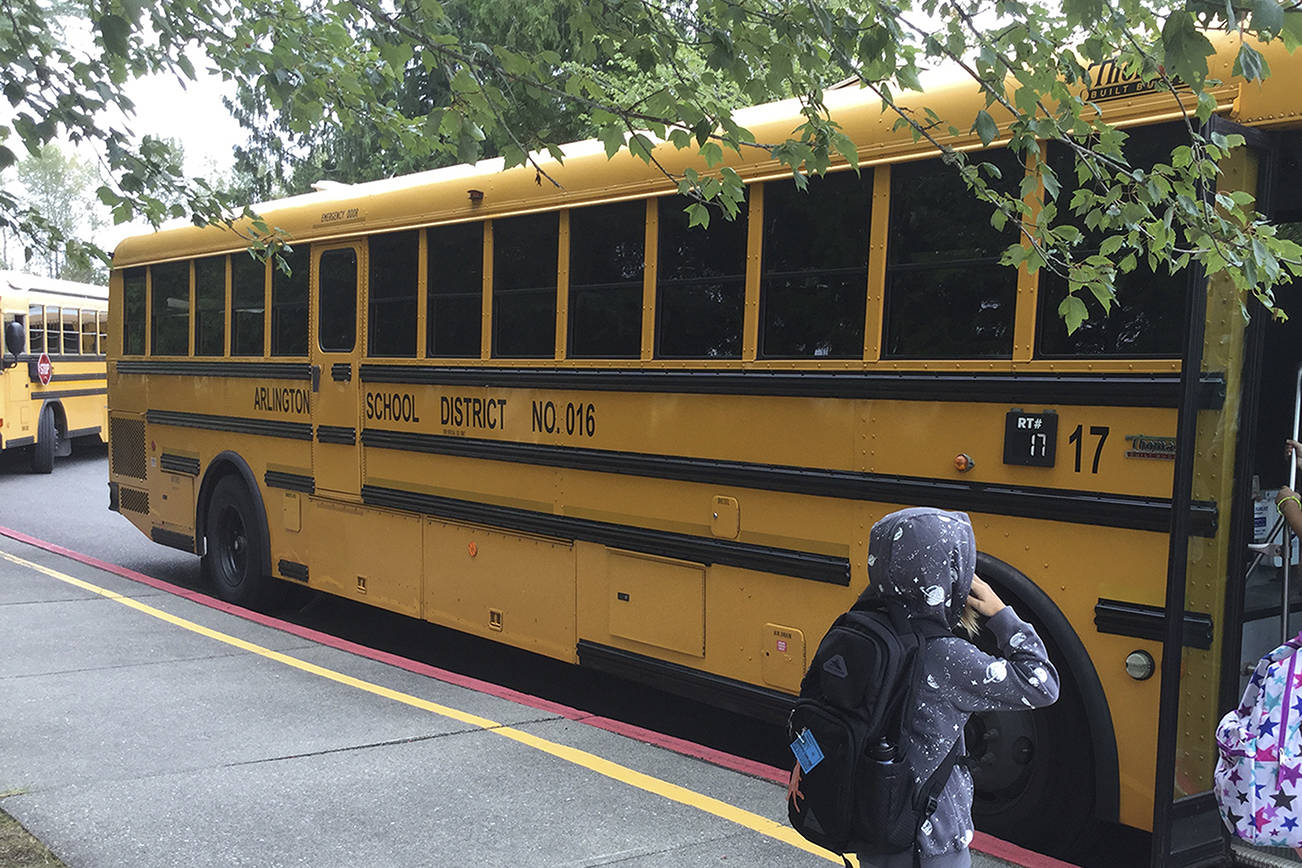MARYSVILLE – Arlington and Marysville residents planted more than 500 trees along Edgecomb Creek at Strawberry Fields Park on a blustery Earth Day.
About 80 volunteers of all ages grabbed shovels, slogged through mud and non-native canary grass to reach the potted young trees of their choice to plant into pre-dug holes.
Jackie Eller of Marysville brought her daughters Charlie and Andi to do their part for the environment.
“We worked really hard to plant my two trees; I had to dig a hole for one of my trees,” said Charlie, who was one of a few members of Girl Scout Troop 42041 who showed up.
Jake Evans, who volunteered along with his dad, figured he planted seven trees, and he still had the energy to plant more.
“I can’t wait to see my trees grow,” Jake said. As for if he will return to check up on them, the 9-year-old Arlington boy said, “of course.”
The tree planting was sponsored by the two cities and the Adopt-A-Stream Foundation. In all, 15 types of young trees were planted – ranging from Douglas fir and Red alder to Big leaf maple and Blue elderberry.
Arlington stormwater manager Bill Blake said the event gave participants a chance to learn more about salmon habitat and restoration efforts.
Blake was pleased that the partners planted in a downstream area of the Quilceda Allen Watershed that sees impacts from Marysville and Arlington. Streams, wetlands and riparian corridors provide habitat for migratory fish and wildlife in and along the creek system.
“The fish spawn in the upper Edgecomb Creek up in Arlington,” Blake said. “The juveniles rear here in Edgecomb and Olaf Straad creeks.”
Projects such as the tree planting benefit both cities, the Tulalip Tribes and the region in coordinated surface water management efforts. “The fish don’t know boundaries,” he said.
They may not know boundaries, but they do know obstacles. Culverts are a barrier to fish. Water flows in local tributaries are sometimes too shallow or too strong for younger and older fish to swim through. Other challenges include water quality, sediment caused by urban development, stormwater runoff, pesticide use and other pollutants, as well as livestock and pet waste.
With walking trails crossing the creek and a large dog park drawing people to Strawberry Fields, event organizers reminded pet owners to “scoop the poop, bag it, and throw it away.”
To that end, aside from not letting bad stuff enter storm drains at home, planting trees is one of the best things people can do to make a difference to preserve fish.
“Trees create shade to help the fish and improve water quality,” Adopt-a-Stream ecologist Walter Rung said. “They help keep the water temperature cool, create more dissolved oxygen in the water, and they control the amount of sunlight, too, which can be harmful to fish if too exposed.”
Contrary to doubters who think fish can’t survive the journey, Rung has the images to prove it. At their booth at the event, Rung set up an underwater camera in the creek that fed live video back to a TV that gave visitors a look at Coho salmon fingerlings swimming upstream – some alone, some in groups.
Edgecomb Creek is on the state Department of Ecology’s 303(d) list for impaired waterbodies exceeding state water-quality standards for temperature, dissolved oxygen and fecal coliform levels. The trees were funded by a DOE grant using Environmental Protection Agency money that focuses on water quality.







